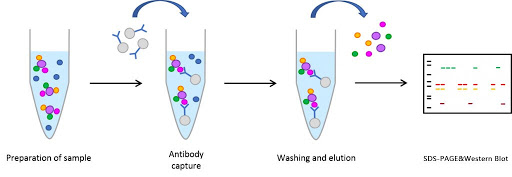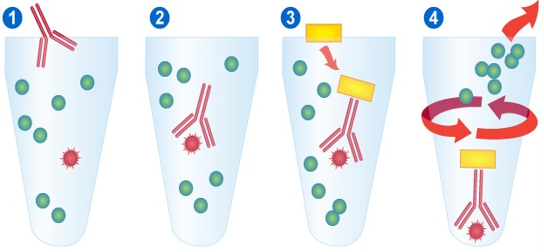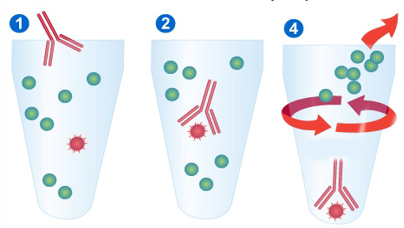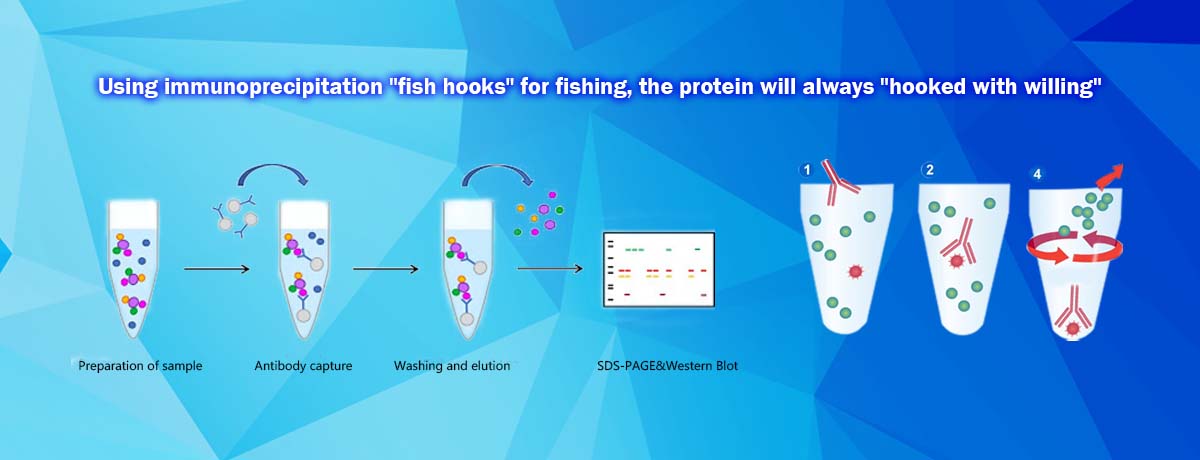Using immunoprecipitation "fish hooks" for fishing, the protein will always "hooked with willing"
The thoughtful Thursday is here again, and the editor who has long been unable to bear it is finally released to meet our favorite "Abbkine Fans".
This time, the editor brings you a wave of colorful biological science mysteries-protein interaction. If protein interaction is compared to an interesting "fishing" activity, then the tag antibody coupling carrier we use is a sharp and strong "fish hook", and the tag recombinant protein (bait protein) is sweet and delicious. "Bait", and our target protein is the "fish" that moves freely in the water.
If you want to do your job well, you must first sharpen your tools. Maybe you are still worrying about the purification and enrichment of the target protein without a good antibody coupled to Beads. Maybe the protein content you collected at this time is low, maybe you are enriching it at this time. The protein impurity content is high, maybe the protein vitality that you have harvested through the hard work at this time has been reduced, maybe the Beads operation steps you are using now are long and take a lot of time, maybe, maybe...
Next, the editor will give you a feast of protein experiments: reveal the whole process of protein interaction, what kind of magic operation is IP and Co-IP?
- Immunoprecipitation (IP)
"Immunoprecipitation" generally refers to a small-scale protein affinity purification experiment using a binding protein immobilized on a solid support. More precisely, IP is an experiment in which a specific antibody immobilized on a microbead support (usually agarose resin) is used to purify a single antigen from a complex mixture. The assembly of the immobilized protein complex can be performed step by step or completed in one step (Figure 1). Common loading sequence: incubate the antibody and sample (such as cell lysate) together, and then add affinity beads to capture the antibody-antigen complex. It is also possible to incubate the antibody and microbeads (directly or indirectly bind to the antibody through the antibody binding protein, such as protein A, G, or AG), and then add the sample containing the antigen. After the antigen, antibody and solid support are bound, the beads are washed thoroughly, and then an appropriate elution buffer is used to elute the antigen from the support.

- Co-immunoprecipitation (Co-IP)
Co-immunoprecipitation analysis (Co-IP) is very similar to IP. The basic technique is to use immobilized antibodies specific to the target antigen; however, the goal of IP is to purify a single antigen, while Co-IP is designed to separate the antigen and the antigen. Bound protein or ligand. In the Co-IP experiment, the known antigen is called the bait protein, and the protein bound to it is called the target protein. The target protein may be some complex chaperone proteins, signal molecules, structural proteins, cofactors, etc. The intensity of the interaction between proteins may range between highly transient and very stable. The basic Co-IP experiment scheme is the same as that of IP. In fact, any IP system can be used for Co-IP. However, there are many other factors that need to be considered, for example, the optimization of binding and washing conditions. When optimizing, the strength of the bait protein-target protein interaction and the affinity of the antibody-bait protein need to be considered.

Disadvantages of Co-IP experiment:
Low-affinity and instant protein-protein interactions may not be detected; the binding of the two proteins may not be a direct binding, but a third party may act as a bridge in the middle; the target protein must be predicted before the experiment to choose the final Antibodies tested, so if the prediction is incorrect, the experiment will have no results.
Advantages of Co-IP experiment:
The interacting proteins are all post-translationally modified and are in a natural state; protein interactions are carried out in a natural mixed protein state, which can avoid human influence; the interacting protein complex in the natural state can be separated.
- Technical upgrade of IP and Co-IP
Basic steps of traditional IP and Co-IP:

- Add the appropriate antibody.
- The antibody binds to the target protein.
- Add Protein A/G to make the antibody-protein complex insoluble.
- Centrifuge the solution to separate the antibody-protein complex.
- Remove the supernatant and wash.
Limitations of traditional ProteinA/G in IP applications:
- Time-consuming
- When the antibody species, subtype and ProteinA/G do not match, the ability of ProteinA/G to bind to the antibody is weak
- Binding with other immunoglobulins in the sample, resulting in non-specific binding, resulting in high background
Basic steps of IP and Co-IP after upgrade:

- Add the appropriate antibody conjugate.
- The antibody binds to the target protein.
- Centrifuge the solution to separate the antibody-protein complex.
- Remove the supernatant and wash.
After using our upgraded agarose/magnetic bead coupling tag antibody, we can be surprised to find that the experimental process eliminates a time-consuming and complicated experimental operation of antibody and carrier binding, and the perfect combination of antibody and Beads , Improve the accuracy of the target protein being "pulled", the purity and yield of the target protein obtained will be significantly improved, and the operation is simple, saving time and effort!
Having said that, you must be impatient for our Abbkine's "protein weapon". The editor is now very proud to recommend our agarose/magnetic bead conjugated antibody to everyone:
| Cat.No | Product name | Application |
| A02010AGB | Anti-DDDDK Tag Mouse Monoclonal Antibody, Agarose) | IP/Co-IP |
| A02010MGB | Anti-DDDDK Tag Mouse Monoclonal Antibody, Magnetic Beads) | IP/Co-IP |
| A02040AGB | Anti-HA Tag Mouse Monoclonal Antibody, Agarose | IP/Co-IP |
| A02040MGB | Anti-HA Tag Mouse Monoclonal Antibody, Magnetic Beads | IP/Co-IP |
| A02050AGB | Anti-His Tag Mouse Monoclonal Antibody, Agarose | IP/Co-IP |
| A02050MGB | Anti-His Tag Mouse Monoclonal Antibody, Magnetic Beads | IP/Co-IP |
| A02060AGB | Anti-Myc Tag Mouse Monoclonal Antibody, Agarose | IP/Co-IP |
| A02060MGB | Anti-Myc Tag Mouse Monoclonal Antibody, Magnetic Beads | IP/Co-IP |
| A02170AGB | Anti-V5 Tag Mouse Monoclonal Antibody, Agarose | IP/Co-IP |
| A02170MGB | Anti-V5 Tag Mouse Monoclonal Antibody, Magnetic Beads | IP/Co-IP |
This issue is mainly about the knowledge of immunoprecipitation, time is limited, I have to say goodbye to everyone again. At the same time in the next issue, there will be Pull dowN operation tips with protein interaction to meet you. Stay tuned~~~~~
You are welcome to pay more attention to the Abbkine, and there will be great scientific research surprises waiting for everyone. At the same time, in order to provide readers with a platform for learning biological knowledge, Abbkine’s technical experts have, after unremitting efforts, sorted out the dry goods of a variety of high-end biological experiments, and later published them in the WeChat public account. Please continue to pay attention to Abbkine for readers who love science. the public.
Abbkine focuses on the fields of proteinology and cytology, and is committed to the innovation and research and development of various antibodies, proteins, analytical reagents and kits, in order to become a key promoter in the development of life science research, drug development and other fields. We provide you with the favorite products of protein and immunological research users, from basic immunology products, such as protein extraction and quantification, to internal reference label antibodies, primary antibodies and secondary antibodies for immunological experiments; cell research users’ favorite products, from Dyes and kits for detecting cell status, organelle extraction kits, cell substructure staining and tracking and cell metabolism detection products, to cytokine and protein detection kits for cell culture, are only for your research career !












